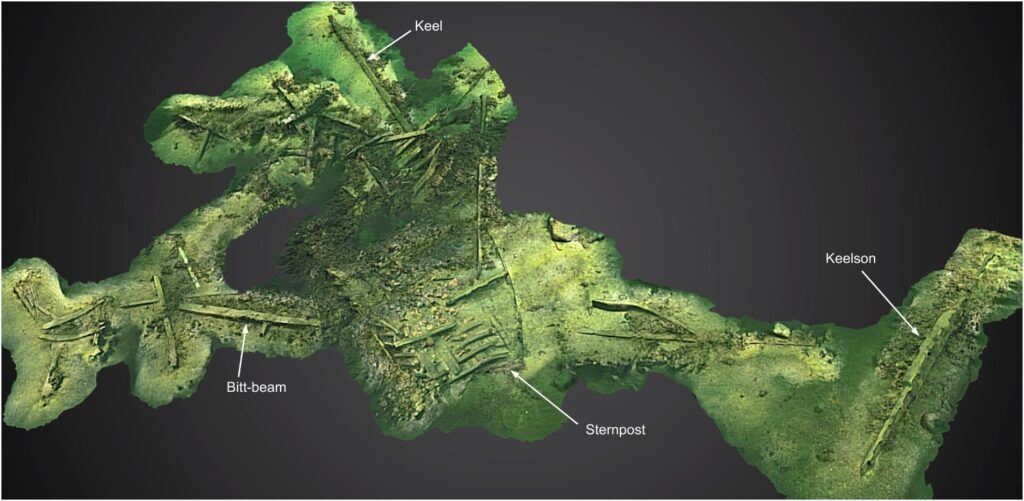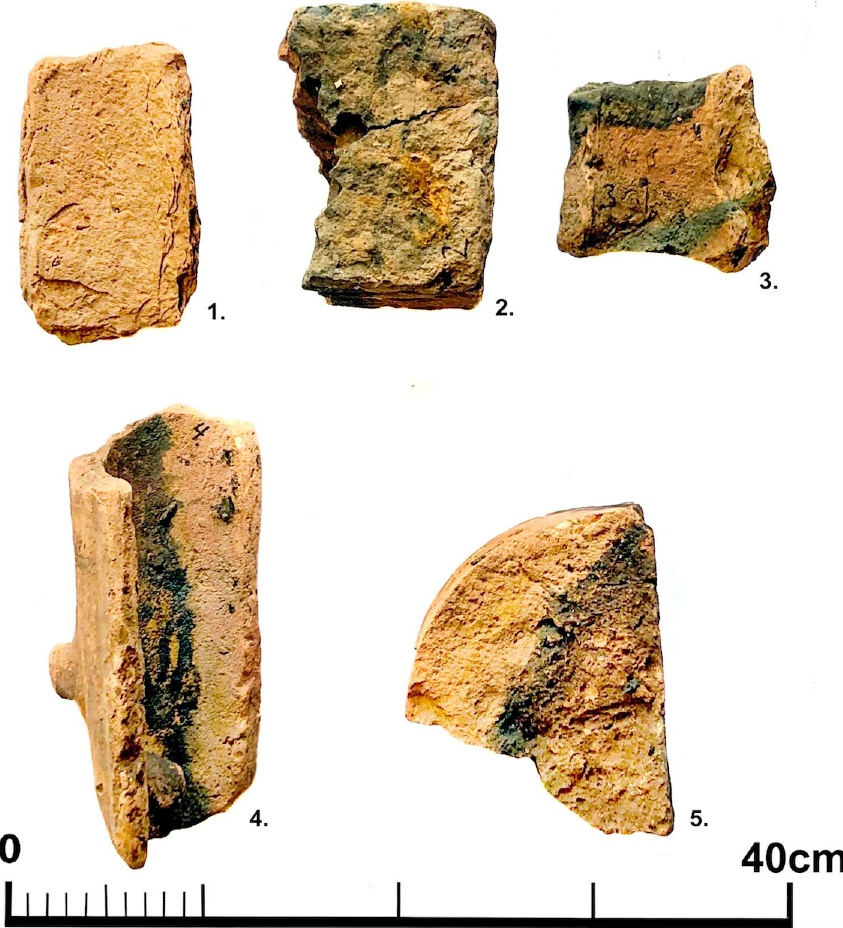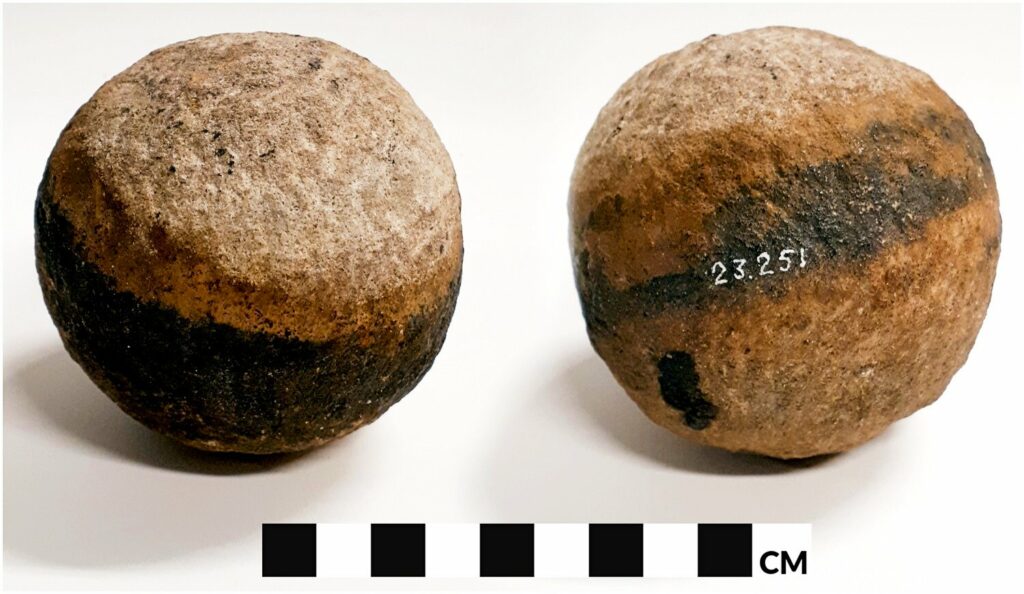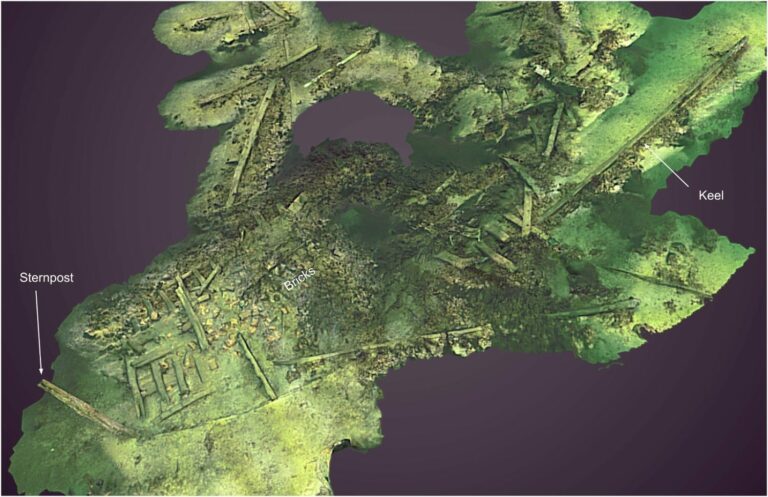A 15th-century armed merchant shipwreck sunk off Maderö Island near Stockholm has drawn Swedish divers for the past 55 years, but it was only in the summer of 2022 that an underwater archaeological team was able to conduct a scientific investigation – and their report has now been published.
Among a number of surprises contained in the study is that the vessel does not seem to be Swedish.
“Knowledge of large late-mediaeval combined merchant and fighting ships is limited,” say the archaeologists. “As stone shot have been recovered from the otherwise brick-laden ship, the Maderö wreck appears as an illustrative and interesting example of a merchant vessel that was large and sturdy enough to carry artillery. It was thus decided to have a new, closer look at the site.”
The divers collected photogrammetric images and material samples from the wreck, which lies at a maximum depth of 22m. From its orientation they determined that the vessel had been heading towards Stockholm when it sank, and was only about 20 miles short of its destination.

At 20m long with an 8m beam, the boat was relatively large by late mediaeval standards. It was thought to have been arriving from Lübeck, more than 400 nautical miles away in northern Germany.
A number of mediaeval timber vessels have been found well-preserved in the brackish Baltic Sea, and dendrochronological analysis has now shown that some of the wood on the Maderö wreck was felled as long ago as 1467.
The actual year of construction of the boat and its sinking might have been closer to the year 1500, but what particularly interested the team was that much of the timber appeared to have originated outside Sweden.
It is now thought that the vessel was probably built in the vicinity of Lübeck, at a shipyard well-enough stocked for the builders to be able to choose from different qualities of timber for various parts of the boat.
Cargo analysis
The vessel’s remaining cargo reinforced the German connection. It had long been known to consist of items of masonry, but chemical analysis of samples from the many bricks and roof-tiles onboard traced the clay used to make them to the Baltic state of Mecklenburg-Vorpommern, with the likelihood of Lübeck being the vessel’s home port.

The discovery has surprised historians who would have expected Sweden to be producing its own building materials rather than importing them. The bricks included both standard rectangular and other shapes for specialised use around windows and doors. If there was other cargo on the boat, it was probably organic and would have biodegraded.
The stone cannonballs found on the vessel are thought to have been ammunition for defending it against a variety of threats to merchant shipping in the Baltic at the time. Rust and sulphur traces on one of them suggest that it had probably been loaded into a gun’s breech ready to fire.

“I have noticed that there is a lot of focus on pirates when people write about this wreck,” Stockholm University archaeologist and lead author of the study Niklas Eriksson told Divernet. “There were several different conflicts raging in the Baltic Sea area due to the collapsing Kalmar Union as well as hostilities with the Hanseatic League – the reasons for arming merchant ships were several.”
If the boat was German, it would likely have been linked to the Hanseatic League, an organisation of northern German communities and a powerhouse in Baltic trade.
As a counterweight to the league, since the late 14th century the Kalmar Union had united the three kingdoms of Denmark, Sweden and Norway, along with the latter’s colonies such as Iceland, Greenland, Orkney and Shetland.
However, the trading rivalry, international political tensions and internal conflicts that would eventually tear the Scandinavian union apart could render Baltic crossings dangerous and unpredictable in the late 15th century – leaving piracy only a part of the picture.
The wreck was first dived in 1969 by members of Stockholm Recreational Diving Club, who recovered timbers and three stone cannonballs.
The new study was a collaboration between Stockholm University and Swedish National Maritime & Transport Museums (SMTM), which runs the Vrak (Wreck) Museum in Stockholm. It has been published in the International Journal of Nautical Archaeology.
Also on Divernet: Iron balls draw divers to rare 1500s shipwreck, 2 lions with apple: 17th-century carvings stun divers, Swedish divers survey British Annie shipwreck, Divers date unique Baltic shipwreck, Vrak divers find 10 more Baltic wrecks, 6 historic wrecks ID’d for diver trail


A very interesting read I’ve will be researching this further many thanks.